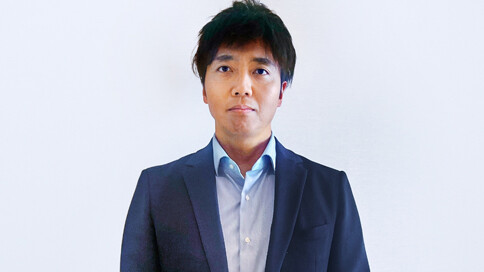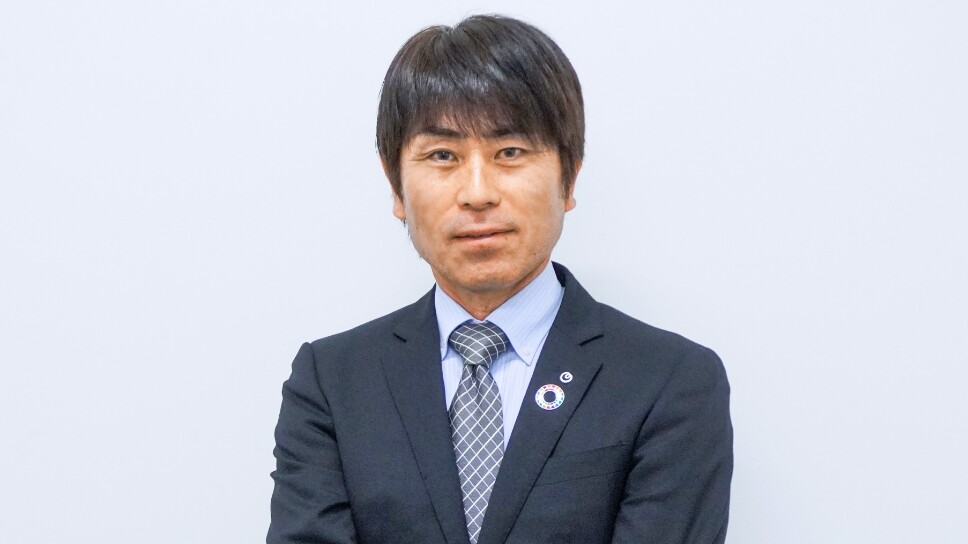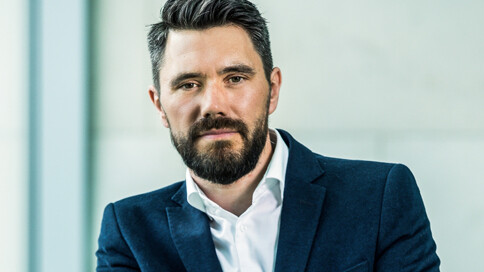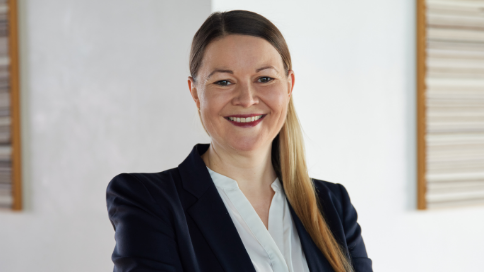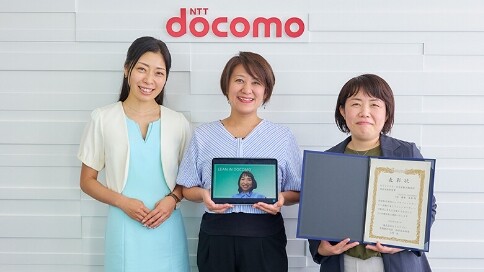Microsoft ends support for Internet Explorer on June 16, 2022.
We recommend using one of the browsers listed below.
- Microsoft Edge(Latest version)
- Mozilla Firefox(Latest version)
- Google Chrome(Latest version)
- Apple Safari(Latest version)
Please contact your browser provider for download and installation instructions.
NTT's Sustainability Efforts
Drones bring a revolution to "infrastructure inspections" as social infrastructure
Japan Infra Waymark Corporation President and Representative Director(At the time of interview)
Takumi Shibata


Deterioration of infrastructure in Japan and staff shortages are matters of the utmost urgency
"Infrastructure" is something that people do not pay much attention to on a day-to-day basis. Ironically, the importance of infrastructure underpinning our lifestyles--such as water, electricity, communications, and transportation--first comes to light when any of these services are disrupted.
"When an aqueduct bridge collapsed in Wakayama City in October 2021, around 60,000 households--almost 40% of the city--suffered from a water outage. You can imagine how much of a problem it was for people without running water. And the inconvenience caused to residents unable to cross the bridge. Any type of outage with infrastructure has a major impact on so many people's lifestyles. This is the reason why we need to continue with infrastructure inspections." (comment from Takumi Shibata also follows below)
Cases like these are by no means limited just to Wakayama--infrastructure across Japan was built rapidly during the period of high economic growth, and after half a century, their dilapidation is becoming a serious issue. Consequently, the importance of regular infrastructure inspections is greater than ever.
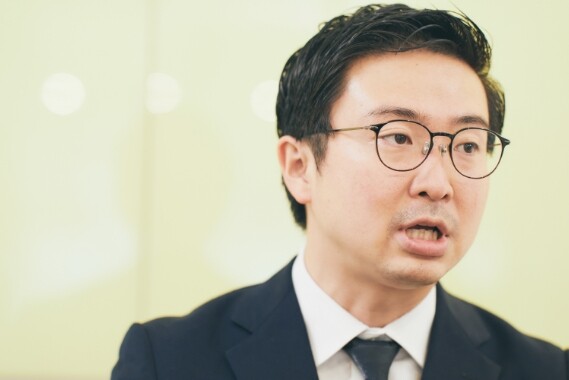
"A closer look at the cost of inspections of bridges, steel towers and other structures around Japan reveals that they amount to some 30 billion yen annually. When repairs are factored in, this cost increases to around 1 trillion yen. Japan will soon be facing a declining population. This will result in a decrease in tax revenue, which means less costs set aside for inspections. The engineers capable of conducting inspections are also getting older. It is because of this background that we are currently making efforts to use drones to increase the efficiency of inspection work."
Mr. Shibata founded Japan Infra Waymark as part of his determination to find a solution for addressing deteriorating infrastructure. This company operates drones to assist with infrastructure inspection work that is affected by staff shortages.
An example that illustrates this is the inspection of elevated bridge supports--inspectors usually assemble scaffolding, use lifts, or sling ropes up to conduct visual inspections of supports. Yet these methods all take time, and are also dangerous to perform.
"Our expertise is using drones to achieve this type of work. The "Skydio J2" drone jointly developed with an American company is equipped with three cameras on both the top and bottom, which identify target areas just like human eyes, and operates autonomously to avoid flying into obstacles. This is the only type of drone capable of automatically flying to avoid obstacles in areas like below bridges, where GPS signals cannot reach, making it possible to conduct inspections under bridges--something that was not possible in the past. When the drone approaches a target area and takes a photograph, cracks (fractures) as small as 0.05 mm can be identified. When the drone returns back to base, image data is automatically uploaded to the cloud, and an inspection record is created. This increases the efficiency of the entire inspection process.

In the three years since being established, the company has a proven track record of inspecting 6,400 structures (as of June 2022), the highest number in Japan, for which it received the MM Research Institute Award 2022.The source of inspiration behind this rapid growth is President Shibata's determination to resolve social issues.
A clue as to why NTT contributes to society is visible in a desert in California
The roots of Japan Infra Waymark can be traced back to a presentation on potential business ideas that Mr. Shibata made to then-president of NTT West where he worked.
Before this, he was assigned to a position in America--he was so impressed when he visited the Mojave Desert in the State of California and witnessed wind turbines as far as the eye could see.
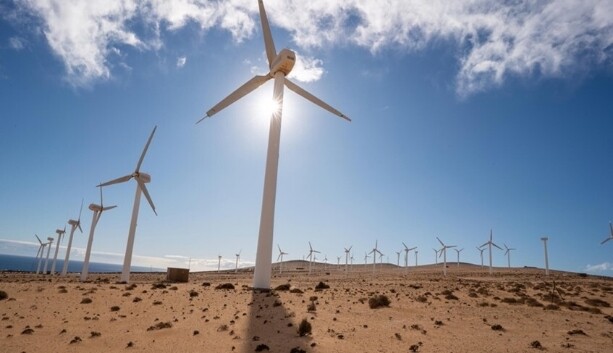 Wind turbines located in a Californian desert
Wind turbines located in a Californian desert
"There are just so many wind turbines there. When I asked what they are for, I was told they are to help protect the global environment. Energy suppliers in America are more interested in improving the environment, and they are putting plans into action on an immense scale. It was here that I thought I wanted to do something on a larger scale to make the world a better place. What NTT really needs to focus on is projects that contribute to society. I wanted to launch services that help to improve the global environment or develop a sustainable society. And it was with this mission in mind that I returned to Japan."
Upon returning to Japan, Mr. Shibata was put in charge of business development at NTT West. It was there that he learned about drones and the issue of deteriorating infrastructure in Japan.
"When I thought about what drones could be used for, I ended up with ideas aimed at resolving social issues. During my time exploring various potential avenues, I came across the challenges related to infrastructure maintenance and management--I then arranged a trial for using drones to inspect the hundred facilities owned by NTT West, where I worked. And the results were simply amazing. The time required for inspections of steel towers was reduced by around 60%, with some duct lines slashed by around 80%. In terms of costs, this equates to a reduction of 200 million yen over five years. Similar efforts conducted by local governments facing the same kind of issues have led to an estimated 400 million yen or more reduction in costs annually."
Interviews conducted with other infrastructure operators and local governments revealed similar challenges related to the maintenance and management of infrastructure. Based on investigations following these interviews, Mr. Shibata's presentation on using drones was quickly adopted, leading to the establishment of Japan Infra Waymark.
Infrastructure is a field that requires cooperation. I want to make a difference, free of any company label.
 When he launched his company, Mr. Shibata's presentations outlined the vision of his drone business on a panel.
When he launched his company, Mr. Shibata's presentations outlined the vision of his drone business on a panel.
Illustration of a concept with an NTT building used as a drone base station
Mr. Shibata intentionally removed the name "NTT" from the Japan Infra Waymark company name. The reason for this was Mr. Shibata's vision in line with Self as We.
"I view infrastructure inspections as a sector built on cooperation instead of competition. Rather than each company developing their own proprietary inspection system, companies should be cooperating to develop a system that is the most efficient and economical for society. That is why I decided to take "NTT" out of the company name, despite being part of the NTT Group, to indicate our stance as a public tool to be used by society.
I eventually want to expand this service beyond Japan and on to a global scale. Users in America, India and other countries could use an online app to set the drone to fly around for a certain period before returning to base. I am looking to develop the framework for such a drone sharing platform."

Sustainability
NTT STORY
WEB media that thinks about the future with NTT



